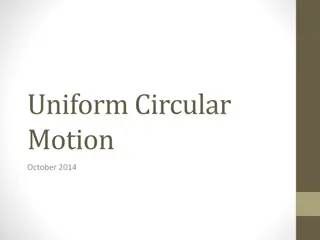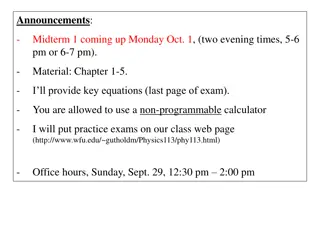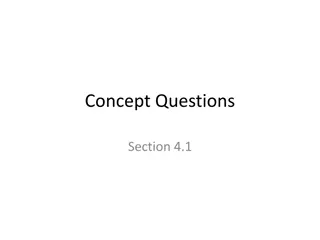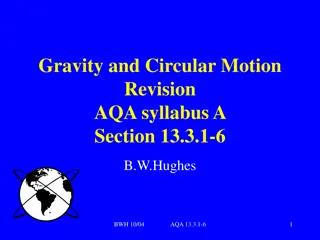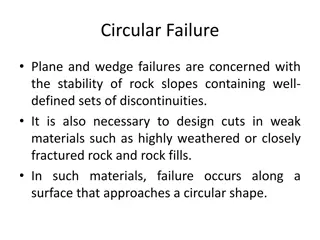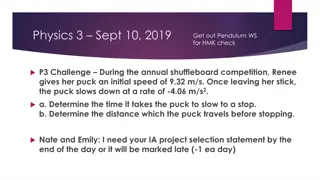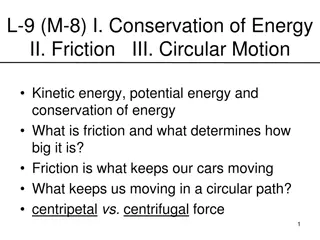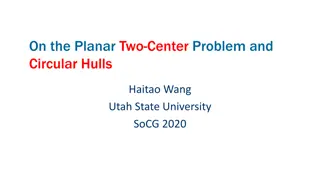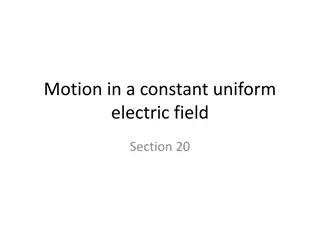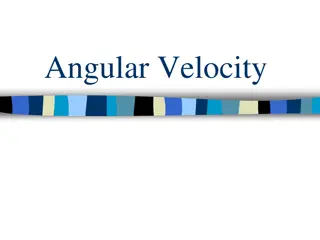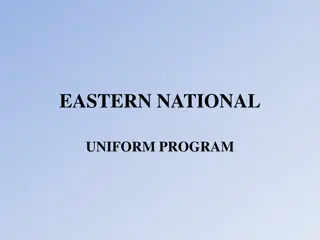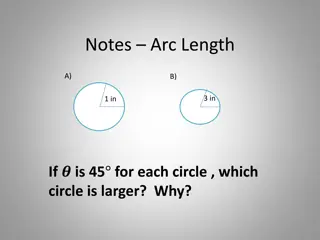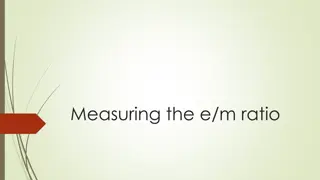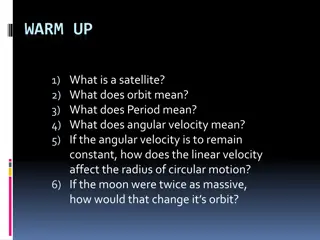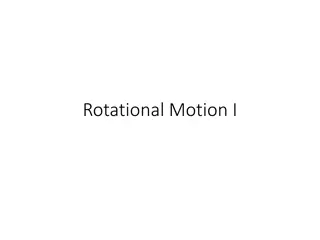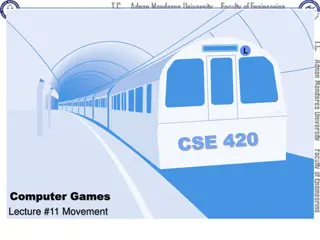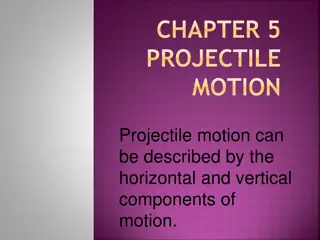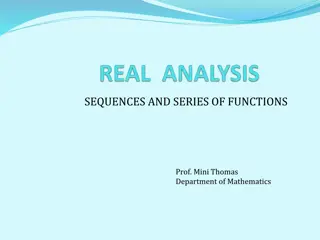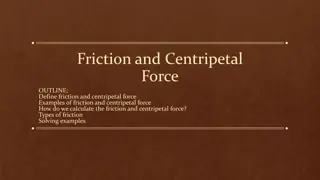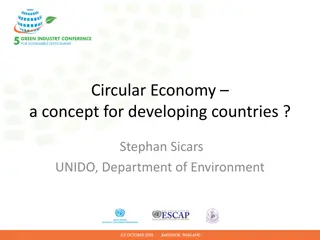Understanding Uniform Circular Motion: Concepts and Examples
Exploring the concept of uniform circular motion (UCM) with real-world examples, explanations on acceleration, net force, measurement of uniformity, mathematical relationships, and practical calculations for scenarios involving UCM.
- Circular Motion
- UCM Examples
- Centripetal Acceleration
- Real-world Applications
- Measurement Techniques
Download Presentation

Please find below an Image/Link to download the presentation.
The content on the website is provided AS IS for your information and personal use only. It may not be sold, licensed, or shared on other websites without obtaining consent from the author. Download presentation by click this link. If you encounter any issues during the download, it is possible that the publisher has removed the file from their server.
E N D
Presentation Transcript
http://www.youtube.com/watch?v=TThIX7hk 5bo&feature=related
What does UNIFORM CIRCULAR MOTION look like? Can you give a real world example? Are things in UNIFORM CIRCULAR MOTION accelerating? Is there a (non-zero) net force acting on an object engaged in UNIFORM CIRCULAR MOTION?
Uniform means What measurements are UNIFORM? How do you measure, or compute them?
Constant speed Constant radius Continuous acceleration directed radially toward the center Speed = circumference/period S=2 r/T
If a record turns at 33.3 revolutions per minute, or 0.555 revolutions per second, the period is 1.80 seconds. A point on the edge of a 12 inch record is 0.15m from the center of the record. It moves at a speed of S=2 r/T = 2 (0.15)/1.80 = 0.52m/s
The blades of a blender are 3.0 cm long. The blender spins at a maximum rate of 80 revolutions per second. Determine the speed of the tips of the blades.
A 30.0 kg child rides on the edge of a 10.0m diameter carrousel that makes 7.50 revolutions every 1.00 minutes. Compute the speed of the child.
What is the mathematical relationship between centripetal acceleration (m/s/s) and speed(m/s) for an object undergoing UCM? Consider: If the independent variable is zero, should the dependent variable be zero?
What is the mathematical relationship between centripetal acceleration (m/s/s) and speed(m/s) for an object undergoing UCM? (Keep the radius constant) Consider: If the independent variable is zero, should the dependent variable be zero?
When traveling in a circle, is an object accelerating? Which way? What happened to the centripetal acceleration when the speed doubled?
An astronaut trainee rides in a centrifuge that completes one circle every two seconds. Determine the acceleration of the astronaut if they ride 5.0m from the center.
What is the mathematical relationship between centripetal Force (N) and speed(m/s) for an object undergoing UCM? (Keep the radius constant) Consider: If the independent variable is zero, should the dependent variable be zero?
What happens to the net centripetal force speed doubles but the radius stays constant? net centripetal force if What would happen to the net centripetal force if we keep speed constant, but double the radius? What would happen to the net centripetal force if we keep speed and radius constant, but double the mass of the object?
S=2r/T ac= S2/r Fc= m(S2/r)
The blades of a blender are 3.0 cm long. The blender spins at a maximum rate of 80 revolutions per second. Determine the speed and acceleration of the tips of the blades.
A 20.0 kg child rides on a carrousel, standing 5.00m from the center. The carrousel makes one revolution every 8.00 seconds. Compute the net force acting on the child. What is the direction of the net force? What type of force would provide the net force?
1. ID what you must find, and what you know 2. Draw a FBD 3. ID the inward force 4. (Deal with the vertical forces if necessary) 5. Use Fc= m(S2/r) 6. Sub and solve
How fast can a 1200kg car travel around a 100m radius arc if the coefficient of _______ friction is 0.8? What if the car s mass doubled, but all other factors remained the same?
The Taz Twister was a ride at Great Adventure that consisted of a round room with carpeted walls. Once the room was up to speed the floor was lowered, but the riders, who felt pinned to the wall did not drop with the floor. If the radius of the room was 7.0m, and the coefficient of ______ friction between the riders and the wall was 0.5: A) what speed must the riders have to stay glued to the wall ? B) what Period must the ride have?




